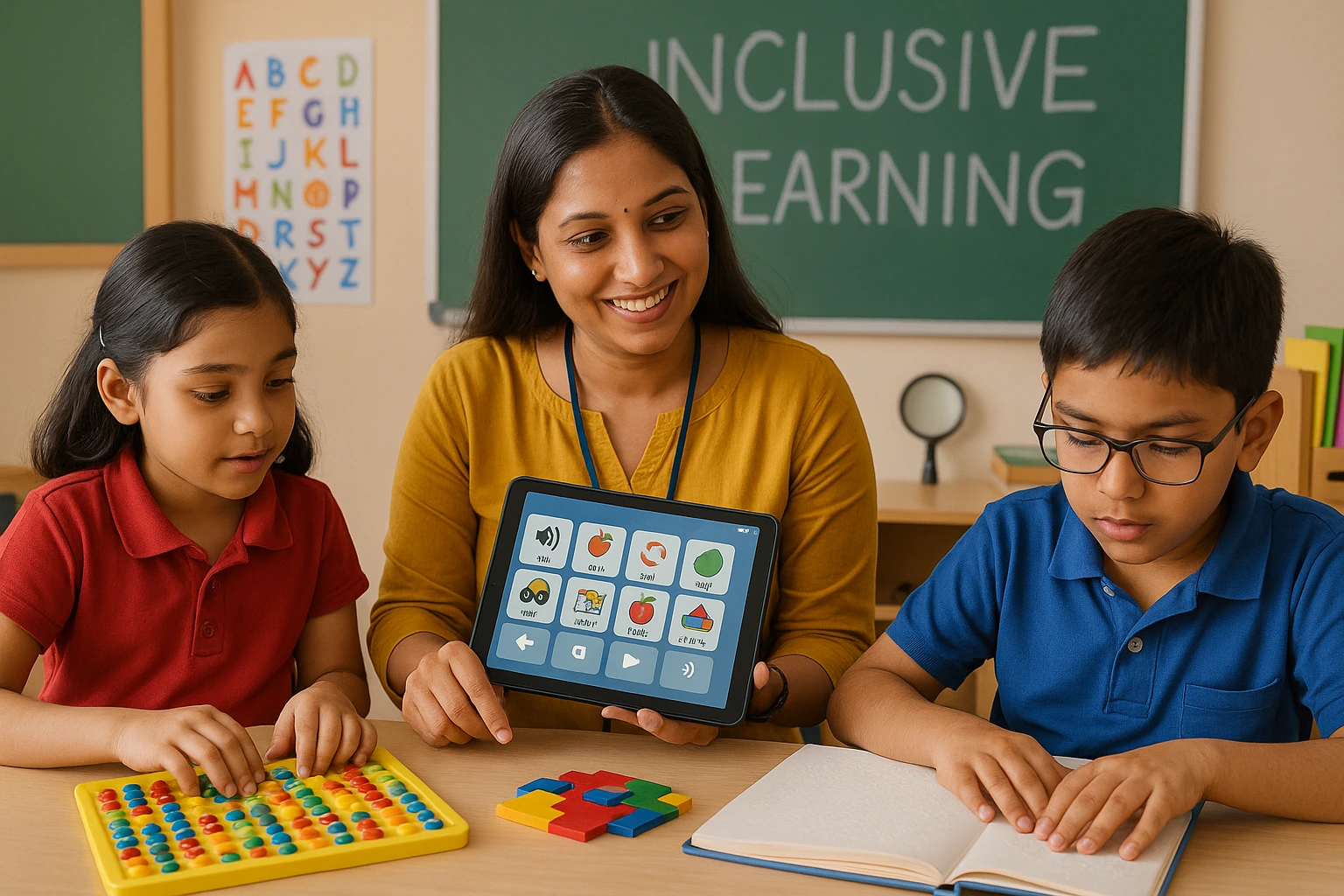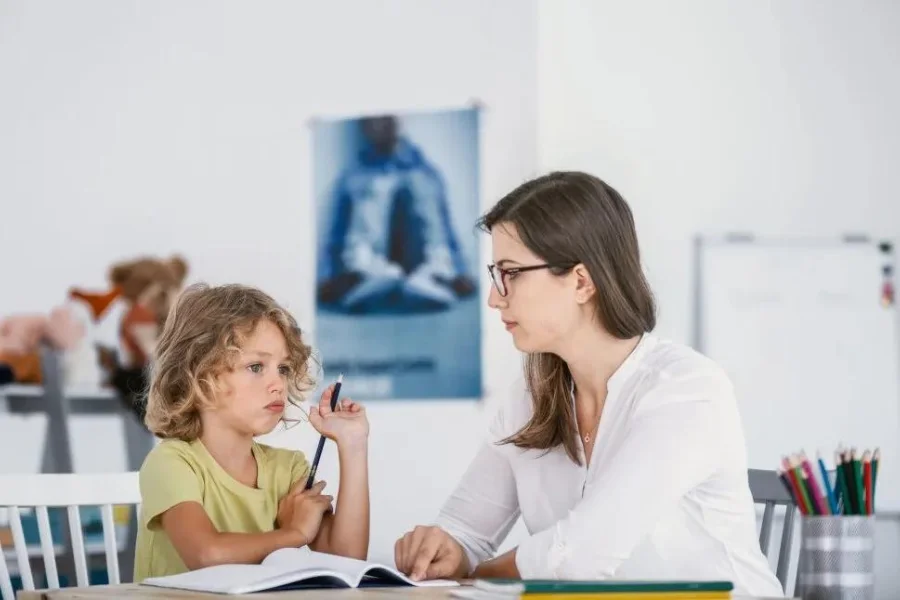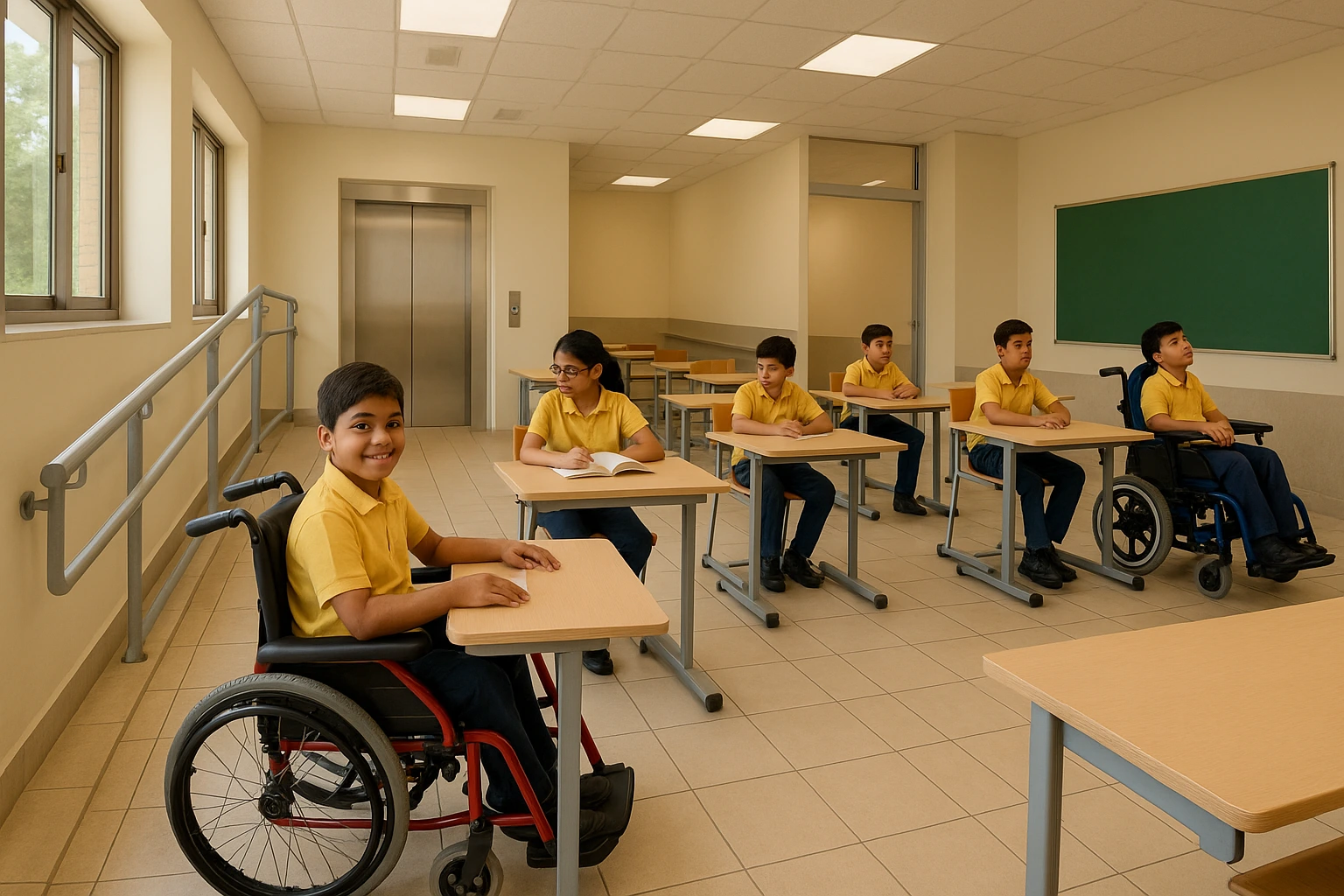Why is Inclusive Education Disability Important?
Why is Inclusive Education Disability Important?
Disability-inclusive education is crucial to the success of any educational institution in today’s academic landscape. Inclusive Education ensures that classrooms are child-friendly, providing children with the space to feel comfortable and develop at their own pace, using their preferred learning style. Schools that follow the inclusive education disability principles develop equality and respect for all.
Inclusive Education helps to uplift the educational standards of any institution by incorporating a variety of teaching methods and pedagogies that help ensure that every child understands the topics thoroughly. Along with the academic aspect, Inclusive Education celebrates the diversities of children in a mainstream classroom by instilling a spirit of empathy, positivity, and a great level of understanding amongst children in the classroom.
When the challenges of children with special needs are deeply understood by their counterparts, educators, and communities, it helps to lay down the principle of equal opportunities for learning with fair efforts.
Table of Content
What is Disability in Inclusive Education?
Disability is discussed in terms of Inclusive Education. Disability represents the physical, academic, sensory, emotional, or developmental barriers that may limit a student from learning in an Inclusive classroom. Inclusive Education Disability is fundamentally about the reduction of barriers to access quality education for all students, regardless of need. This orientation of disability in our understanding of inclusive education represents an effort to develop a more inclusive and adaptable pedagogy for all students.
Here’s a closer look at the key types of disabilities considered in Inclusive Education Disability:
- Physical Disabilities
- Sensory Disabilities
- Intellectual Disabilities
- Emotional and Behavioural Disorders
- Learning Disabilities
Inclusive Education Disability endeavours to see differences as strengths that have to be tapped fruitfully and used thoughtfully to ensure each child attains their learning goals effectively. By ensuring that every child’s learning needs are addressed, educators design a learning atmosphere that values each child, giving their confidence a huge boost.
To download the brochure of the LD Course, Click Here!
Call or WhatsApp on +919321024137 / +919869546913 for more details of the LD Course!

What are the Models of Disability in Inclusive Education?
Inclusive Education is an essential approach in mainstream education that helps students with varied learning needs be prolific in the regular classroom, giving them a fair chance to acquire high-quality education and lead successful lives. The different models of disability in Inclusive Education refer to the different approaches of thinking about disabilities and what impact it has on the teaching strategies that will be used in the inclusive classrooms.
Here are the main models of disability in Inclusive Education Disability:
- Medical Model of Disability
- Social Model of Disability
- Bio-Psychosocial Model of Disability
- Human Rights Model of Disability
Each model influences how Inclusive Education Disability is planned and practiced, helping to shape inclusive classrooms that support all learners effectively.
To download the brochure of the LD Course, Click Here!
Call or WhatsApp on +919321024137 / +919869546913 for more details of the LD Course!

Source: innovationdistrict
How does Inclusive Education Benefit Students with Disabilities?
Inclusive Education Disability provides effective support to disabled students because disabled students belong in mainstream classrooms as long as they are given the proper resources, support, and learning approaches. To support all students with special needs by ensuring that students never feel excluded or that their disability keeps them out of the student body. The schools are helped in using inclusive methods so that the classroom learning gives all students the chance to learn and grow with their peer group.
Here are the main ways Inclusive Education Disability benefits students with disabilities:
- Equal Learning Opportunities
- Improved Social Skills
- Increased Confidence and Self-respect
- Access to a Wider Range of Resources
- Preparation for Real-World Life
- Positive Peer Attitudes
Inclusive Education Disability is more than just a teaching method—it is a commitment to fairness, opportunity, and growth for every kid. By supporting students with disabilities in regular classrooms, schools help build a stronger, more caring learning community.
To download the brochure of the LD Course, Click Here!
Call or WhatsApp on +919321024137 / +919869546913 for more details of the LD Course!

How do you create an Inclusive Environment for Students with Disabilities?
Inclusive Education Disability is based on the principle of devising a supportive and respectful environment.
A conducive learning atmosphere helps to foster the child’s confidence, helping them function with minimal assistance, confident and capable of learning alongside their peers.
Below are effective ways to create such an environment:
Adapt the Physical Space
A key part of Inclusive Education Disability is ensuring that physical spaces are accessible.
- Ramps, elevators, and adjustable desks make classrooms physically accessible.
- Using large-size graphics and bigger print teaching aids helps children view better.
- Design noise-free zones for children who have issues with noisy atmospheres.
Making essential accommodations, especially the infrastructural ones, helps children access the surroundings with minimal assistance.
Use Differentiated Instruction
Inclusive Education Disability thrives on using different teaching techniques.
- Visual, auditory, and practical techniques help meet diverse learning styles.
- Flexible groups allow individual support and collaboration.
- Lesson plans should incorporate different types of assessment methods to track the child’s progress and not the age—old methods of rote learning.
Using flexible methods helps each child to attain their learning goals in their preferred learning style.
Encourage Peer Support and Collaboration
Positive peer relationships are important in any Inclusive Education Disability method.
- Conduct activities that combine children with different abilities.
- Assign buddies to children to assist them in classroom tasks.
- Promote the values of respecting culture and acceptance through role-play and skits.
When students study and work together, it builds empathy and understanding naturally.
Provide Professional Development for Teachers
Teachers are the most important link to the Inclusive Education Disability success.
- Continuous training helps teachers to gain a better understanding of the latest advancements in different teaching strategies
- Workshops to be held daily, comprising behavioural support, communication tools, and inclusive curriculum design.
- Teachers to hold informal meetings where they share their experiences and gain valuable information from each other.
- A well-updated educator can make a huge difference in the classroom functioning and is well-versed with strategies for handling children with special needs.
Involve Families and Caregivers
Family involvement strengthens Inclusive Education for Disability by creating a support network.
- Involve families in the regular meetings to keep them updated about the child’s periodic progress.
- Take their inputs for IEP planning.
- Always incorporate their feedback in the reviewing or adapting of lesson plans for better learning for the child.
Open communication lines between home and school help in better learning outcomes for the child.
Use the Latest Technology aids.
Advanced tech tools are extremely beneficial in strengthening the foundation for Inclusive education disability.
- Incorporating latest software such as Speech-to-text interface, graphic organisers.
- Tools should be personalized based on student needs.
- Educators must ensure students know how to use these tools effectively.
Tech-based tools remove barriers and promote independence.
Promote an empathetic and positive classroom atmosphere
Inclusive Education can be a major success only when classrooms are highly focused on the child’s needs, ensuring they feel secure.
- Have a serious impact on child bullying.
- Establish clear boundaries and rules that highlight the child’s struggles.
- Take special efforts to make children aware of their strengths, no matter how unique these strengths are.
Inclusive Education Disability is a valuable tool that has helped change the whole mindset and our perception of special needs. It has helped to ensure that each child gets a fair chance to be a part of the mainstream classroom and doesn’t get secluded or confined to a separate learning space.
Inclusive Education Disability works for all children, whether they have any learning difficulty or not. By using multi-sensorial methods, adapted instruction methods benefit children are highly benefitted. It promotes an atmosphere of being respectful towards children with special needs by fostering a spirit of empathy, understanding, and peer support. With consistent dedicated efforts and various strategies, children with special needs thrive under a respectful classroom culture where they grow, connect, and attain their true potential.
Inclusive Education Disability helps in equal access to learning opportunities for all children and is a yardstick to ensure that children get the desired academic support they are entitled to. For candidates who wish to make a thoughtful and bankable career in the field of Inclusive Education, undergoing rigorous training under a Special Ed Program is the key. The Learning Disability Course offered by Vidhyanidhi Education Society (Govt. Regd.) trains teachers with practical skills to support diverse students. Explore this course to strengthen your ability to foster meaningful inclusion and make a lasting impact in the field of education.
Shape brighter futures—join Vidhyanidhi’s LD Course and support inclusion!
To download the brochure of the LD Course, Click Here!
Call or WhatsApp on +919321024137 / +919869546913 for more details of the LD Course!
FAQs
Do Teachers Need Special Training for Inclusive Education?
Yes, Teachers need specific, exclusive training for Inclusive Education if they want to address the learning needs of children with special needs effectively.
How does Inclusive Education Support Academic Performance?
It boosts academic growth by adapting teaching methods to varied needs, encouraging engagement, and fostering peer collaboration.





